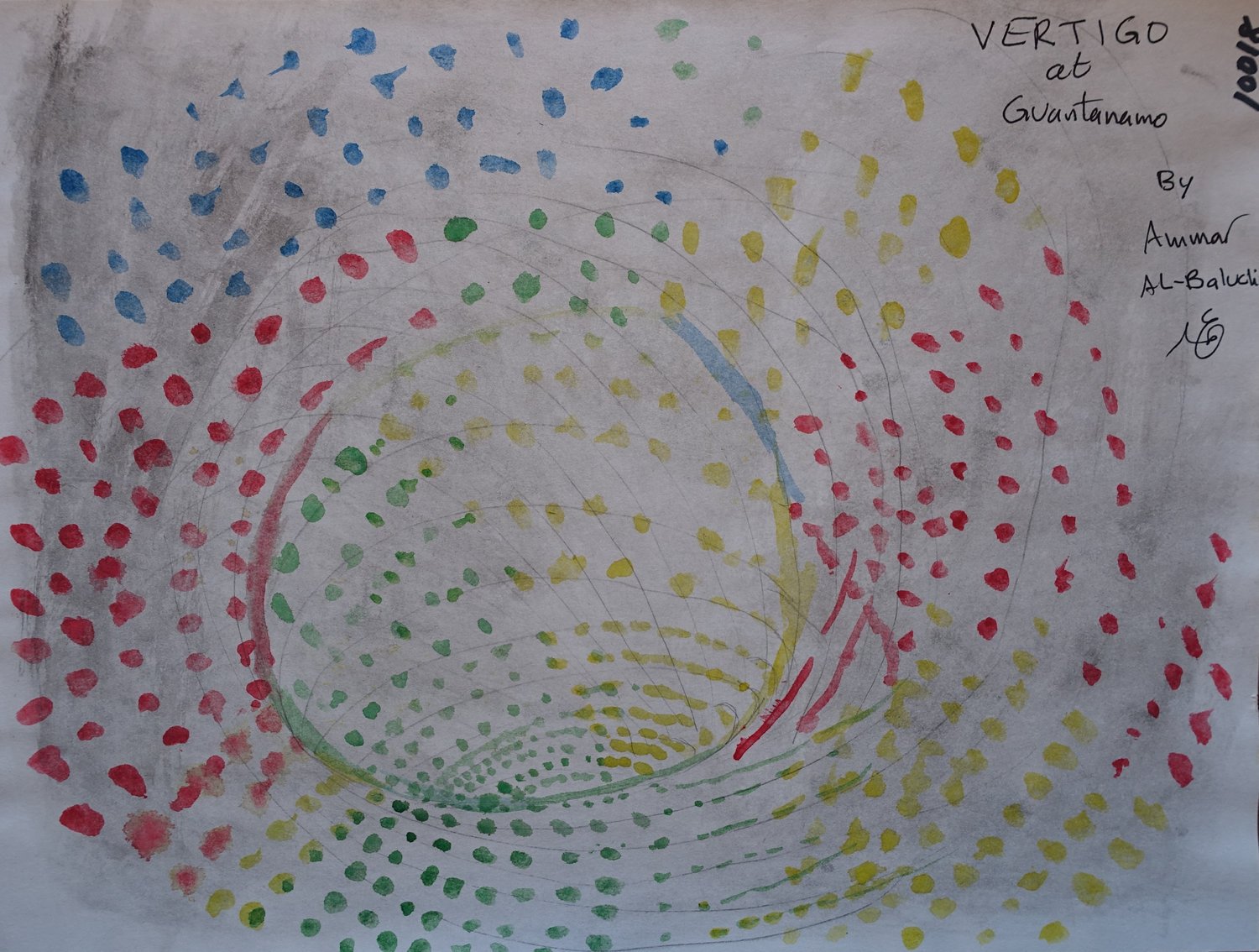
Ammar al Baluchi, a prisoner held at Cuba’s Guantánamo Bay dentition facility, will not be allowed to show his artwork. On Friday, a military commission judge denied a motion from the detainee’s lawyer calling for the Department of Defense to lift restrictions prohibiting the display and distribution of his paintings.
In US custody since 2003, Al Baluchi is suspected of helping plan and finance Al Qaeda’s 9/11 attacks. His lawyer, Alka Pradhan, believes Al Baluchi’s artwork is important to his mental health—one of his artworks, Vertigo at Guantánamo, is said to be inspired by his alleged torture at the hands of the CIA—and could potentially make him more sympathetic to a jury.
Ammar al-Baluchi, Seashore. Courtesy of Art From Guantánamo Bay.
Pradhan did not comment on the most recent development in her client’s case. A trial is not currently scheduled.
The news that Al Baluchi’s artwork will remain restricted, reported by the Associated Press, comes days after another Guantánamo prisoner, Ahmed Muhammed Haza al Darbi, was allowed to bring dozens of his artworks with him when he was released to a Saudi Arabian prison, where he will serve the remainder of a 13-year sentence. In 2014, Al Darbi pleaded guilty to terrorism-related offenses involving a 2002 Qaeda attack on a French-flagged oil tanker off Yemen’s coast.
Ahmed al Darbi made this painting while imprisoned at Guantánamo as a present for his lawyer, Ramzi Kassem. Photo courtesy of Ramzi Kassem.
“Darbi was allowed to take as much of his art as he wanted,” Navy commander Anne Leanos, a prison spokeswoman, told the Miami Herald, noting that Guantánamo staff “packaged the art in preparation for the transfer and delivered the art to the aircraft crew as Darbi boarded the flight.”
The Department of Defense moved to restrict access to artwork made by prisoners at the Cuban detention center after a controversial exhibition, “Ode to the Sea: Art from Guantánamo Bay,” showcasing the work of Guantánamo inmates went on view in New York last fall. Previously, the prisoners had been allowed to give away artwork, once it had been screened for secret messages, to family members, legal counsel, and the Red Cross.
Pentagon spokesperson Navy commander Sarah Higgins told the Herald that Al Darbi’s artwork was released “based on a request from the chief prosecutor, and due to Al Darbi’s cooperation.” (As part of his plea deal, Al Darbi has served as a witness for the prosecution in two other trials.) Higgins declined to comment further on the case, which is still being reviewed before the ruling can be published on the Military Commission website.